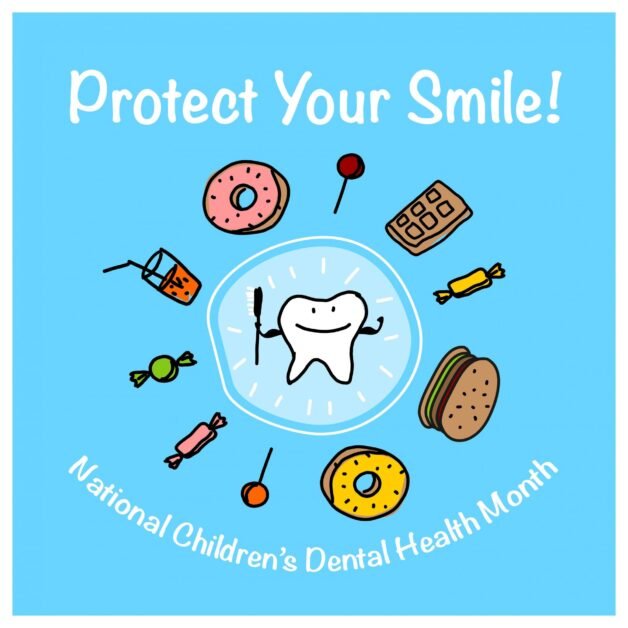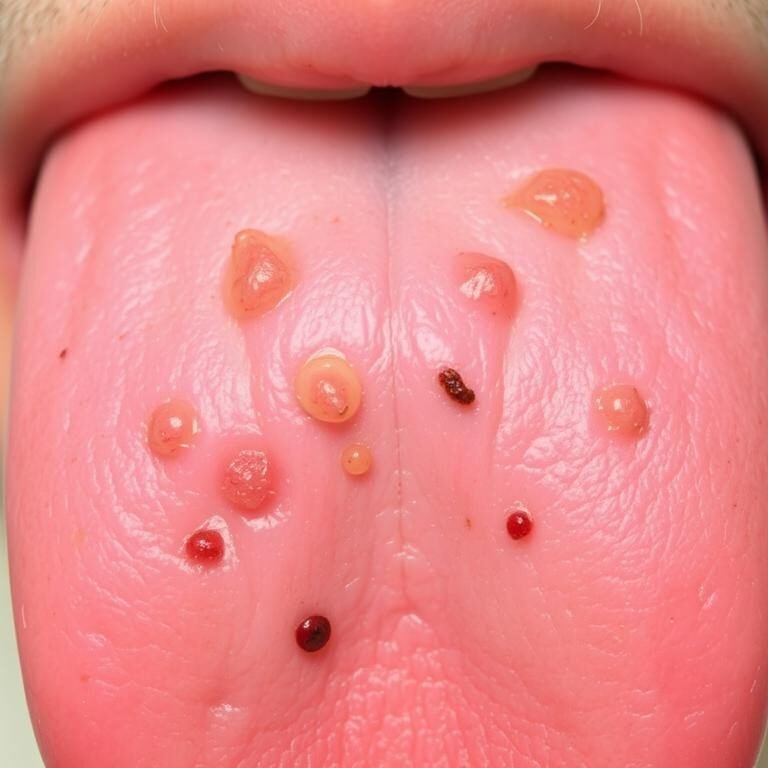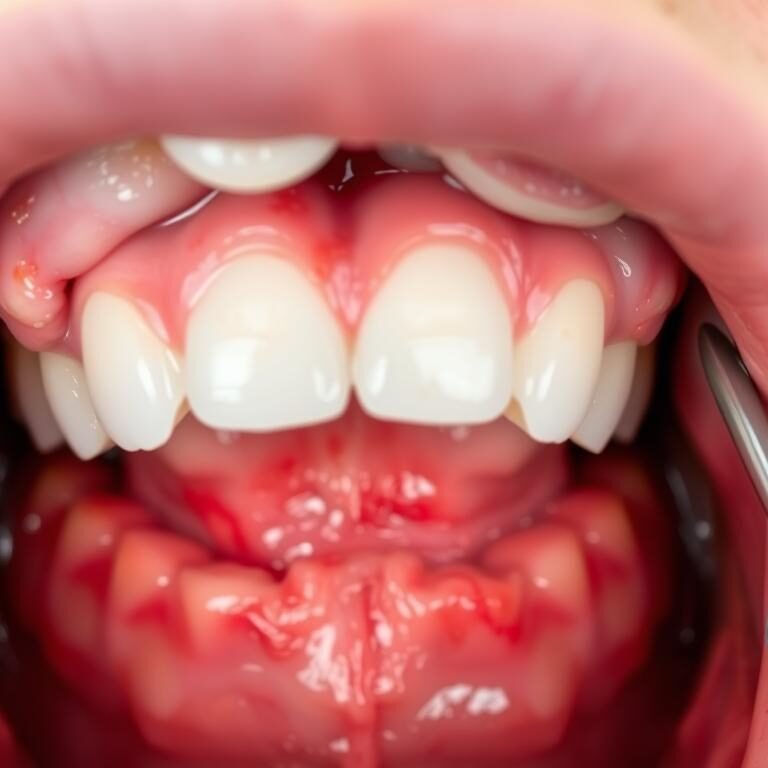Table of Contents
The Importance of Oral Hygiene for Children
Maintaining good oral hygiene is crucial for the overall health and well-being of children. As a parent, it is essential to understand the importance of oral hygiene practices and to instill them in your child from an early age. Developing good oral hygiene habits can prevent dental issues such as cavities, gum disease, and tooth decay, which can have long-term effects on your child’s oral health.
Regular brushing and flossing are the foundation of a strong oral hygiene routine. Brushing should be done at least twice a day, using a soft-bristled toothbrush and a pea-sized amount of fluoridated toothpaste. It is important to guide your child on the correct technique for brushing, using gentle circular motions to clean all surfaces of the teeth. Additionally, introducing flossing into your child’s oral hygiene routine is vital for removing plaque and food particles from between the teeth. Teaching your child the proper way to floss can help prevent cavities and gum disease in hard-to-reach areas. By prioritizing oral hygiene practices, you are setting your child up for a lifetime of healthy teeth and gums.

Developing Good Oral Hygiene Habits from an Early Age
Developing good oral hygiene habits from an early age is crucial for setting the foundation of a lifetime of healthy teeth and gums. By instilling these habits during childhood, parents can ensure that their children maintain optimal oral health into adulthood.
One of the first habits to establish is regular and thorough brushing. Children should be encouraged to brush their teeth at least twice a day, using a soft-bristled toothbrush and a pea-sized amount of fluoride toothpaste. It is important to emphasize the importance of brushing for two minutes each time, ensuring that every tooth surface is cleaned. Additionally, teaching children the correct technique – brushing in small circular motions, gently massaging the gums and brushing the tongue – will help to effectively remove plaque and prevent cavities.
Choosing the Right Toothbrush and Toothpaste for Kids
When it comes to oral hygiene for kids, choosing the right toothbrush and toothpaste is essential for maintaining their dental health. As a parent, it’s important to understand that not all toothbrushes and toothpastes are created equal. There are specific considerations to keep in mind when selecting these dental care products for your child.
First and foremost, let’s talk about toothbrushes. It’s recommended to choose a toothbrush with soft bristles, as they are gentle on the gums and tooth enamel. Look for a toothbrush that has a small head and a comfortable grip, making it easier for your child to hold and maneuver. Additionally, consider using a toothbrush with a fun design or their favorite character to make brushing more enjoyable for them.
Now let’s discuss toothpaste. For children under the age of three, it’s recommended to use fluoridated toothpaste in an amount no larger than a grain of rice. This small amount is sufficient to protect their teeth from tooth decay, while minimizing the risk of fluorosis. For children aged three and older, a pea-sized amount of fluoridated toothpaste is appropriate. Be sure to supervise your child while they brush to ensure they don’t swallow the toothpaste.
By choosing the right toothbrush and toothpaste for your child, you are setting them on the path to good oral hygiene. Teaching them proper brushing techniques and making it a fun and engaging activity will help establish a lifetime of healthy dental habits. Remember, regular dental check-ups and professional advice from your child’s dentist are key components in maintaining their oral health.
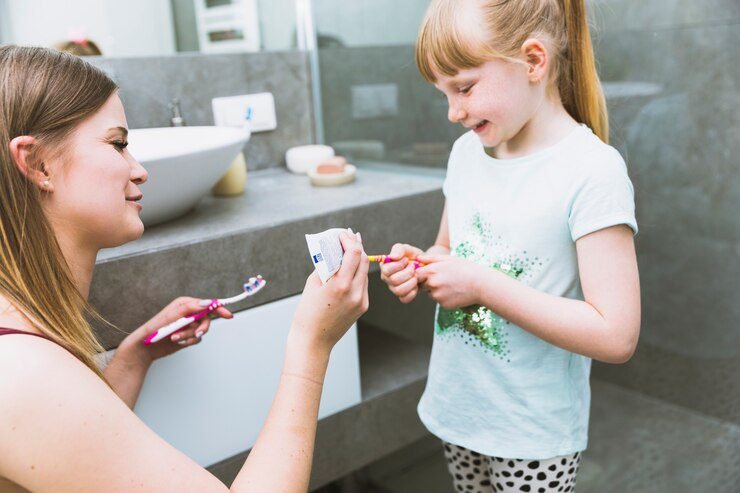
The Correct Technique for Brushing Teeth
Brushing teeth is an essential part of maintaining good oral hygiene, and it is especially important for children to learn the correct technique from a young age. Proper brushing technique ensures that teeth are thoroughly cleaned, removing plaque and preventing tooth decay.
When brushing, it is crucial to use a soft-bristled toothbrush appropriate for your child’s age. The toothbrush should be held at a 45-degree angle towards the gumline, allowing the bristles to reach both the teeth and the gums. Using gentle, circular motions, brush each tooth individually, spending a few seconds on each. Make sure to clean the back teeth as well, as they are more susceptible to decay. Additionally, don’t forget to brush the tongue to remove bacteria and freshen breath.
As a parent, it is important to supervise your child’s brushing routine until they can handle it independently. Encourage them to brush for at least two minutes, twice a day. Using a timer or playing their favorite song during brushing can make it more enjoyable. By teaching children the correct technique for brushing teeth, you are instilling good oral hygiene habits that will benefit them for a lifetime.
Introducing Flossing into Your Child’s Oral Hygiene Routine
Flossing is a crucial step in maintaining good oral hygiene for children. While brushing helps remove plaque from the surfaces of the teeth, flossing targets the areas between the teeth and along the gum line where a toothbrush can’t easily reach. Introducing flossing into your child’s oral hygiene routine from an early age can help establish healthy habits that will benefit them for a lifetime.
Start by choosing the right floss for your child. There are various types available, such as waxed or unwaxed, flavored or unflavored, and floss picks or traditional floss. Experiment with different options to find one that your child finds comfortable to use. Then, demonstrate the proper technique for flossing. Hold the floss tightly between your fingers and gently guide it between each tooth, carefully curving it around the base of the tooth to reach below the gum line. Avoid snapping or forcing the floss, as it may injure the delicate gum tissue. Encourage your child to floss at least once a day, ideally before bedtime, to remove any food particles and plaque that may have accumulated throughout the day.
Teaching Kids the Importance of Regular Dental Check-ups
Regular dental check-ups are an essential part of maintaining optimal oral health for children. These routine visits to the dentist not only help to prevent and detect dental problems but also educate children about the importance of oral hygiene. During these check-ups, dentists thoroughly examine children’s teeth, gums, and mouth to identify any signs of decay, cavities, or gum disease. They also provide professional teeth cleaning to remove plaque and tartar buildup that cannot be effectively removed through regular brushing and flossing.
In addition to addressing existing oral health issues, regular dental check-ups allow dentists to ensure that children are practicing good oral hygiene habits at home. Dentists can provide personalized advice on proper brushing and flossing techniques, as well as recommend the right toothbrush and toothpaste for each child’s specific needs. These check-ups also serve as an opportunity to reinforce the importance of a well-balanced diet for strong teeth and gums, and to discuss the potential risks of certain habits, such as thumb sucking or pacifier use. By instilling these lessons early on, parents and dentists can work together to promote a lifetime of good oral health for children.
Encouraging Healthy Eating Habits for Strong Teeth
Encouraging healthy eating habits is essential for promoting strong teeth and overall oral health in children. What children eat can have a significant impact on the health of their teeth and gums. A well-balanced diet that includes a variety of nutritious foods can help support their oral health and prevent the development of dental issues like cavities and gum disease.
One of the key nutrients for healthy teeth is calcium. Foods such as milk, yogurt, cheese, and other dairy products are rich in calcium and can contribute to strengthening tooth enamel, which is the outer protective layer of the teeth. Incorporating plenty of fruits and vegetables into a child’s diet is also important, as they provide essential vitamins and minerals that are crucial for maintaining good oral health. Additionally, foods high in fiber, such as whole grains, can help stimulate saliva production and naturally cleanse the teeth.
On the other hand, sugary snacks and drinks should be limited as much as possible. Excessive consumption of sugary foods and beverages can lead to the formation of dental plaque, which can attack the tooth enamel and result in tooth decay. Encouraging children to choose healthier alternatives like water or unsweetened beverages, and offering snacks like fresh fruits or nuts instead of sugary treats, can significantly contribute to their oral health. By instilling these healthy eating habits from an early age, parents can play a vital role in setting their children up for a lifetime of strong and healthy teeth.
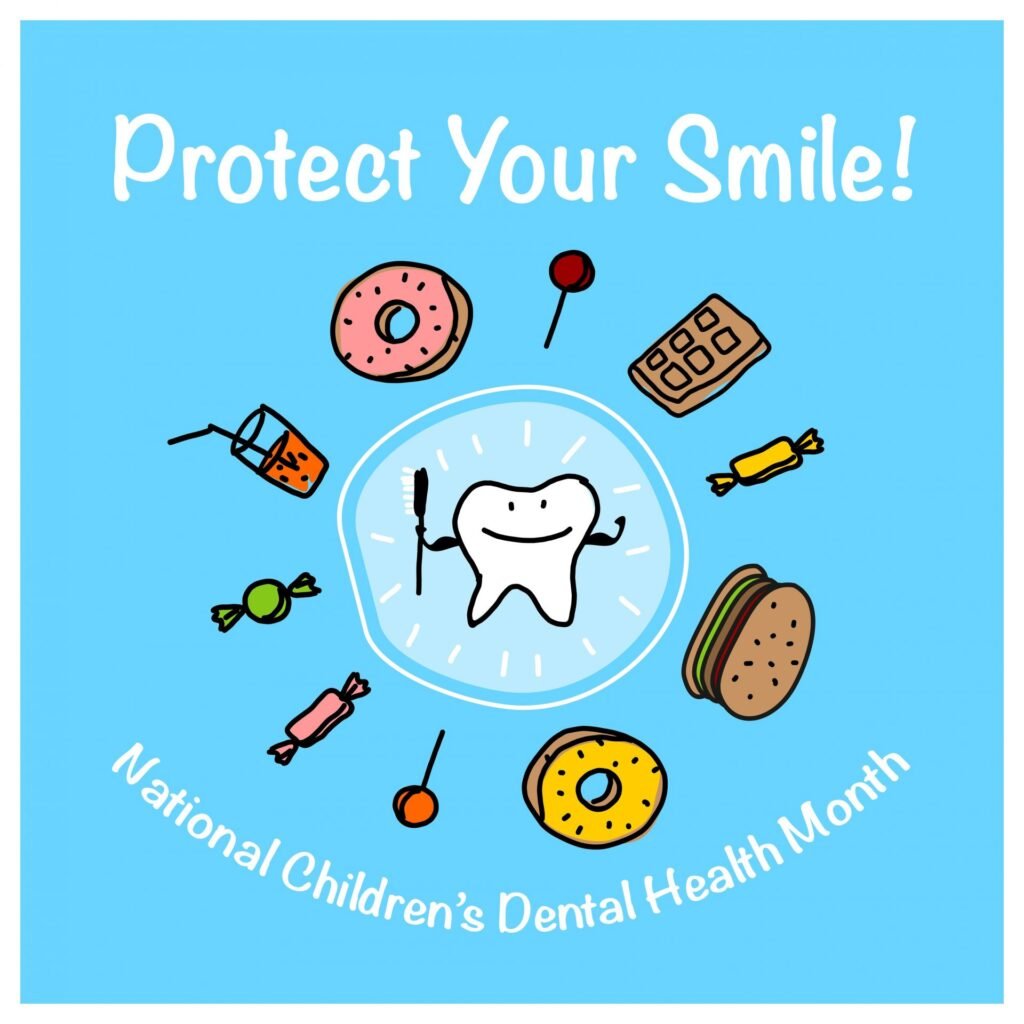
Limiting Sugary Snacks and Drinks for Optimal Oral Health
Limiting sugary snacks and drinks is crucial for maintaining optimal oral health in children. While indulging in the occasional sweet treat is fine, frequent consumption of sugary foods and beverages can have detrimental effects on the teeth. The high sugar content in these items promotes the growth of harmful bacteria in the mouth, leading to tooth decay and cavities.
To prevent these oral health problems, it is important for parents to encourage their children to make healthier snack choices. Instead of sugary snacks like candy and cookies, opt for nutrient-rich alternatives such as fruits, vegetables, and cheese. These options not only provide essential vitamins and minerals for overall health but also help to stimulate saliva production, which aids in neutralizing acids and protecting the teeth.
In addition to snacks, sugary drinks can also contribute to dental issues. Regular consumption of soda, fruit juices, and sports drinks exposes the teeth to prolonged periods of sugar and acid attack. Encourage your child to drink more water and milk, which are not only healthier options but also help to maintain a neutral pH balance in the mouth. By limiting sugary snacks and drinks, parents can help their children maintain optimal oral health and reduce the risk of dental problems in the long run.
The Effect of Thumb Sucking and Pacifier Use on Teeth
Thumb sucking and pacifier use are common habits among infants and young children. While these habits may provide comfort and soothe, they can have a negative impact on the development of teeth and oral health.
Thumb sucking and pacifier use can lead to dental problems if they persist for an extended period of time or are done with excessive force. The constant pressure and motion can cause the teeth to be pushed out of alignment, resulting in an improper bite or malocclusion. This misalignment can lead to difficulties in biting, chewing, and even speaking properly. Additionally, continuous thumb sucking or pacifier use can alter the shape of the roof of the mouth, potentially leading to speech impediments.
It is important for parents to address these habits early on to prevent long-term dental issues. Gradual reduction of thumb sucking and pacifier use is recommended, as sudden cessation can lead to feelings of anxiety and insecurity for the child. Parents can also seek guidance from pediatric dentists, who can provide strategies and techniques to help children break these habits in a gentle and supportive manner. By addressing thumb sucking and pacifier use, parents can ensure their child’s teeth develop properly and set the foundation for a lifetime of good oral health.
Protecting Your Child’s Teeth During Sports and Physical Activities
Participating in sports and physical activities is an important part of a child’s development. However, it is crucial to protect their teeth during these activities to prevent any potential dental injuries. According to the American Dental Association, dental injuries are one of the most common types of facial injuries sustained during sports activities.
To protect your child’s teeth during sports and physical activities, it is essential to provide them with the right protective gear. The most important piece of protective gear for their teeth is a properly fitted mouthguard. Mouthguards can help absorb the impact of a blow to the face or mouth and protect against broken teeth, lip and cheek injuries, and even concussions. It is recommended to use a custom-fitted mouthguard, as it provides the best fit and protection. However, there are also boil-and-bite mouthguards available as a more affordable alternative.
Furthermore, it is crucial to instill good habits in your child to further protect their teeth during sports and physical activities. Encourage them to avoid chewing on hard objects like mouthguards, water bottles, or their sports gear, as this can lead to tooth fractures or damage. Additionally, remind them to stay hydrated with water instead of sugary sports drinks, which can contribute to tooth decay. By following these tips and properly protecting their teeth, your child can enjoy sports and physical activities while maintaining a healthy smile.
| Protection Measure | Description |
|---|---|
| Mouthguards | Custom-fit or boil-and-bite mouthguards can protect teeth during impact. |
| Helmets | In sports like cycling, skateboarding, or hockey, helmets offer head and facial protection. |
| Face Shields | In high-contact sports like hockey or lacrosse, face shields offer additional facial protection. |
| Supervision | Ensure proper supervision during activities to prevent accidents. |
| Proper Technique | Teach your child proper techniques to minimize the risk of dental injuries. |
| Regular Dental Check-ups | Regular visits to the dentist can detect and prevent dental issues early on. |
| Awareness and Education | Educate your child about the importance of protecting their teeth during sports. |
Understanding the Role of Fluoride in Preventing Tooth Decay
Fluoride plays a crucial role in preventing tooth decay, especially in children. As a natural mineral found in water sources, fluoride helps to strengthen tooth enamel, making it more resistant to acid attacks from bacteria and sugary foods. The American Dental Association (ADA) and the Centers for Disease Control and Prevention (CDC) endorse the use of fluoride in dental care, recognizing its significant contribution to oral health.
Research shows that communities with fluoridated water supply have a lower prevalence of cavities compared to those without fluoridation. In fact, studies have demonstrated a 20-40% reduction in tooth decay among children in fluoridated areas. The benefit of fluoride is not limited to water supply alone, as it can also be found in toothpaste, mouth rinses, and professional dental treatments.
The way fluoride prevents tooth decay is by remineralizing the enamel. When the mineral content of the tooth enamel is diminished due to acid attacks, fluoride helps to replenish these essential minerals, such as calcium and phosphate, making the enamel stronger and more resistant to decay. It also inhibits the growth of harmful bacteria in the mouth, further protecting teeth from cavities. With regular and appropriate use of fluoride products, children can significantly reduce their risk of dental caries, leading to a healthier smile and improved overall oral health.
In our next segment, we will delve into practical ways of incorporating fluoride into your child’s oral hygiene routine, including choosing the right toothbrush and toothpaste, as well as addressing any concerns about fluoride safety. Stay tuned for valuable insights and tips on maintaining optimal oral health for your little ones.
How to Deal with Common Dental Issues in Children
Tooth decay and gum disease are common dental issues that many children face. It is essential for parents to be aware of these problems and know how to deal with them effectively. One of the first steps in addressing dental issues in children is to establish a good oral hygiene routine. Encourage your child to brush their teeth twice a day using a fluoride toothpaste and a soft-bristled toothbrush. Ensure that they brush all surfaces of their teeth, including the gums and tongue, and teach them the correct technique for brushing.
In addition to proper brushing, flossing should also be introduced into your child’s oral hygiene routine. This helps remove plaque and food particles from between the teeth and along the gum line, reducing the risk of tooth decay and gum disease. Start flossing your child’s teeth as soon as they have two teeth that touch each other. It is important to demonstrate the proper flossing technique and supervise their flossing until they can do it independently.
Remember, preventive measures are crucial in dealing with dental issues in children. Regular dental check-ups should be a part of your child’s oral health routine. These check-ups not only help maintain good oral hygiene but also allow the dentist to detect any potential problems early on. Schedule dental appointments for your child at least twice a year or as recommended by their dentist. During these visits, the dentist will examine your child’s teeth, perform a thorough cleaning, and provide any necessary treatments or recommendations.
Dealing with common dental issues in children requires consistent effort and parental guidance. By establishing good oral hygiene habits, promoting regular dental check-ups, and addressing any concerns promptly, you can help safeguard your child’s dental health and ensure a bright and healthy smile for years to come.
The Impact of Oral Health on Overall Well-being and Academic Performance
Good oral health plays a crucial role in a child’s overall well-being and academic performance. Research has shown that poor oral health in children can lead to a range of negative outcomes, both physical and mental. For instance, dental problems such as tooth decay and gum disease can cause pain and discomfort, making it difficult for children to concentrate and participate fully in school activities.
Furthermore, poor oral health has been linked to lower self-esteem and social withdrawal among children. A study conducted by the American Academy of Pediatric Dentistry found that children with dental problems were more likely to feel embarrassed or self-conscious about their appearance, leading to a decreased willingness to engage with peers and participate in social interactions. This can have a detrimental impact on their overall well-being and emotional development.
The effects of poor oral health on academic performance cannot be overlooked either. Pain or discomfort caused by dental issues can make it challenging for children to focus and concentrate in the classroom. A study published in the Journal of School Health found that children with dental problems were more likely to miss school days and have lower grades compared to their peers with good oral health. This can result in academic setbacks and hinder a child’s educational success.
It is evident that maintaining good oral health is not only essential for a child’s physical well-being but also has a significant impact on their emotional and academic development. As parents and caregivers, it is crucial to prioritize oral hygiene practices and ensure regular dental check-ups to promote overall well-being and support optimal academic performance in children.
Tips for Overcoming Dental Anxiety in Children
Dental anxiety is a common issue among children, and it can make regular dental visits a challenging experience for both the child and the parent. However, there are strategies that can be employed to help overcome dental anxiety in children and ensure a positive dental visit.
One effective approach is to start building a positive association with the dentist from an early age. Bringing your child to the dentist as soon as their first tooth erupts is recommended. This allows them to become familiar with the dental office environment, the dentist, and the dental team. Regular dental visits from a young age help establish routine and familiarity, making subsequent visits less intimidating. Additionally, choosing a dental office that specializes in pediatric dentistry can make a significant difference in reducing anxiety, as the staff are trained to work with children and provide a child-friendly environment.
| Tip | Description |
|---|---|
| Choose a Pediatric Dentist | Select a dentist who specializes in treating children. They are trained to handle young patients effectively. |
| Start Dental Visits Early | Begin dental check-ups early to familiarize children with the dental environment and prevent fear from developing. |
| Use Positive Language | Use positive and reassuring language when discussing dental visits to alleviate fears and create a sense of comfort. |
| Role-playing Before Visits | Role-play dental visits at home to familiarize children with the process and reduce anxiety about the unknown. |
| Read Books About Dentistry | Read age-appropriate books about dental care to educate children and normalize dental visits as a regular part of health care. |
| Avoid Negative Associations | Avoid discussing negative dental experiences or using dental visits as a threat or punishment for misbehavior. |
| Gradual Exposure | Start with short, non-invasive visits to the dentist to gradually build trust and reduce fear over time. |
| Use Distraction Techniques | Bring along toys, books, or handheld games to distract children during dental appointments and help them relax. |
| Offer Rewards and Incentives | Provide rewards or incentives for good behavior during dental visits, such as stickers or small treats. |
| Stay Calm and Supportive | Remain calm and supportive during dental visits to reassure children and help them feel safe and cared for. |
Teaching Kids the Proper Way to Brush and Floss for Independence
Proper brushing and flossing techniques are essential for maintaining good oral hygiene and preventing dental problems in children. By teaching kids the correct way to brush and floss, we can help them develop independence in taking care of their teeth and gums.
When it comes to brushing, it’s important to choose a toothbrush with soft bristles that is appropriate for your child’s age. The toothbrush should be held at a 45-degree angle and moved in gentle, circular motions to effectively clean the teeth and gums. It’s also crucial to brush all surfaces of the teeth, including the front, back, and chewing surfaces, for at least two minutes each time.
In addition to brushing, flossing should be incorporated into your child’s oral hygiene routine. Flossing helps remove food particles and plaque from between the teeth, where toothbrush bristles cannot reach. To floss properly, a piece of floss should be wrapped around the middle fingers and guided gently between each tooth using a back-and-forth motion. Encourage your child to floss at least once a day, preferably before bedtime.
By teaching kids the proper technique for brushing and flossing, we empower them to take charge of their own oral health. Independence in oral hygiene practices not only promotes a healthy smile but also instills lifelong habits that contribute to overall well-being.
Maintaining Consistency and Reinforcing Good Oral Hygiene Practices
Maintaining consistency and reinforcing good oral hygiene practices is crucial for ensuring the long-term dental health of children. By establishing a regular routine and instilling good habits from an early age, parents can help their children develop a strong foundation of oral hygiene practices that will benefit them throughout their lives.
Consistency is key when it comes to oral hygiene. Encouraging children to brush their teeth at least twice a day, for two minutes each time, is essential. This helps to remove plaque and prevent the buildup of harmful bacteria that can lead to tooth decay and gum disease. It is also important to teach children to brush all surfaces of their teeth, including the front, back, and chewing surfaces, using a soft-bristled toothbrush and a pea-sized amount of fluoride toothpaste. By maintaining this routine, parents can reinforce the importance of good oral hygiene and help their children develop lifelong habits for a healthy smile.
Another important aspect of maintaining consistency is regular dental check-ups. By scheduling routine visits to the dentist every six months, parents can ensure that any potential dental issues are identified and treated early on. These visits also provide an opportunity for dental professionals to reinforce the importance of good oral hygiene practices and provide guidance on proper brushing and flossing techniques. By making these visits a regular part of their child’s oral health care, parents can reinforce the message that dental health is a priority and demonstrate the value of preventive care.
In conclusion, maintaining consistency and reinforcing good oral hygiene practices are essential for the long-term dental health of children. By establishing a regular routine, teaching proper brushing and flossing techniques, and scheduling routine dental check-ups, parents can help their children develop strong oral hygiene habits that will benefit them throughout their lives. It is never too early to start prioritizing oral health, and by making it a regular part of their child’s routine, parents can set the foundation for a lifetime of healthy smiles.
How often should children brush their teeth?
Children should brush their teeth at least twice a day, in the morning and before bedtime.
When should I start taking my child to the dentist?
It is recommended to take your child to the dentist by their first birthday or within six months after their first tooth erupts.
Can I use adult toothpaste for my child?
No, it is important to use toothpaste specifically designed for children, as adult toothpaste may contain higher levels of fluoride that can be harmful if swallowed.
How often should my child floss their teeth?
Once your child’s teeth start touching, usually around the age of 2 or 3, they should begin flossing daily.
What can I do to help my child overcome dental anxiety?
To help your child overcome dental anxiety, you can explain the dental procedures in a positive and age-appropriate manner, choose a pediatric dentist, and consider using relaxation techniques or distractions during dental visits.
How can I protect my child’s teeth during sports activities?
You can protect your child’s teeth during sports activities by ensuring they wear a mouthguard, which can help prevent dental injuries.
What is the role of fluoride in preventing tooth decay?
Fluoride helps to strengthen tooth enamel and makes teeth more resistant to decay. It can be found in toothpaste, mouthwash, and even in some tap water.
Should I be concerned if my child sucks their thumb or uses a pacifier?
Prolonged thumb sucking or pacifier use can affect the alignment of your child’s teeth. If the habit continues after the age of 3 or 4, it is recommended to consult a dentist.
How can I encourage my child to eat healthy for strong teeth?
You can encourage your child to eat healthy for strong teeth by providing a balanced diet that includes fruits, vegetables, whole grains, and dairy products. Limiting sugary snacks and drinks is also important.
How can I teach my child to brush and floss independently?
You can teach your child to brush and floss independently by demonstrating the proper technique, supervising their brushing until they are able to do it on their own, and providing positive reinforcement and encouragement.

